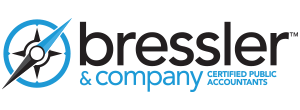Get Credit for Generating Your Own Home Power
Through 2016, you can get a 30% federal tax credit for generating your own home power if you install certain power-generating systems in your home. This credit is non-refundable, which means it can only be used to offset a your current tax liability, but any excess can be carried forward to offset tax through 2016.
Systems that qualify for the credit include:
• Solar water-heating system – Qualifies if used in a dwelling unit used by the taxpayer as a main or second residence where at least half of the energy used by the property for such purposes is derived from the sun. Heating water for swimming pools or hot tubs does not qualify for the credit. The property must be certified for performance by the Solar Rating Certification Corporation or a comparable entity endorsed by the state government where the property is installed.
• Solar electric system – Qualified system that uses solar energy to generate electricity for use in a dwelling unit located in the U.S. and used as a main or second residence by the taxpayer.
• Fuel cell plant – This is a fuel cell power plant installed in the taxpayer’s principal residence that converts a fuel into electricity using electrochemical means. It must have an electricity-only generation efficiency of greater than 30% and generate at least 0.5 kilowatt of electricity. The credit is 30% of qualified fuel cell expenditures but limited to $500 for each 0.5 kilowatt of the fuel cell property’s capacity to produce electricity.
• Qualified small wind energy – A wind turbine used to generate electricity for use in connection with a dwelling unit used as a main or second residence by the taxpayer.
• Qualified geothermal heat pump – Must use the ground or ground water as a thermal energy source to heat the dwelling unit or as a thermal energy sink to cool the dwelling unit, and must meet the Energy Star program requirements in effect when the expenditure is made. The dwelling unit must be used as a main or second residence by the taxpayer.
Other aspects of the credit:
• Limited carryover – The credit is a non-refundable personal credit, which limits the credit to the taxpayer’s tax liability for the year. However, the portion of the credit that is not allowed because of this limitation may be carried to the next tax year and added to the credit allowable for that year. Thus, the credit carryover is available through 2016 (the final year for the credit).
• Installation costs – Expenditures for labor costs allocable to onsite preparation, assembly, or original installation of property eligible for the credit, as well as for piping or wiring connecting the property to the residence, are expenditures that qualify for the credit.
• Swimming pool – Expenditures that are for heating a swimming pool or hot tub are not taken into account for purposes of the credit.
• Newly constructed homes – The credit can be taken for newly constructed homes if the costs of the residential energy-efficient property can be separated from the home construction and the required certification documents are available.
Certification – A taxpayer may rely on a manufacturer’s certification that a product is a Qualified Energy Property. A taxpayer is not required to attach the certification statement to the return on which the credit is claimed. However, taxpayers are required to retain the certification statement as part of their records. The certification statement provided by the manufacturer may be a written copy of the statement that is posted on the manufacturer’s website with the product packaging details in printable form or in any other manner that will permit the taxpayer to retain the certification statement for tax recordkeeping purposes.
Installation costs – Costs for labor allocable to onsite preparation, assembly, or original installation of the residential energy-efficient property are includible.
If you have questions about how you can benefit from this credit, please give Bressler & Company a call at 559-924-1225.





